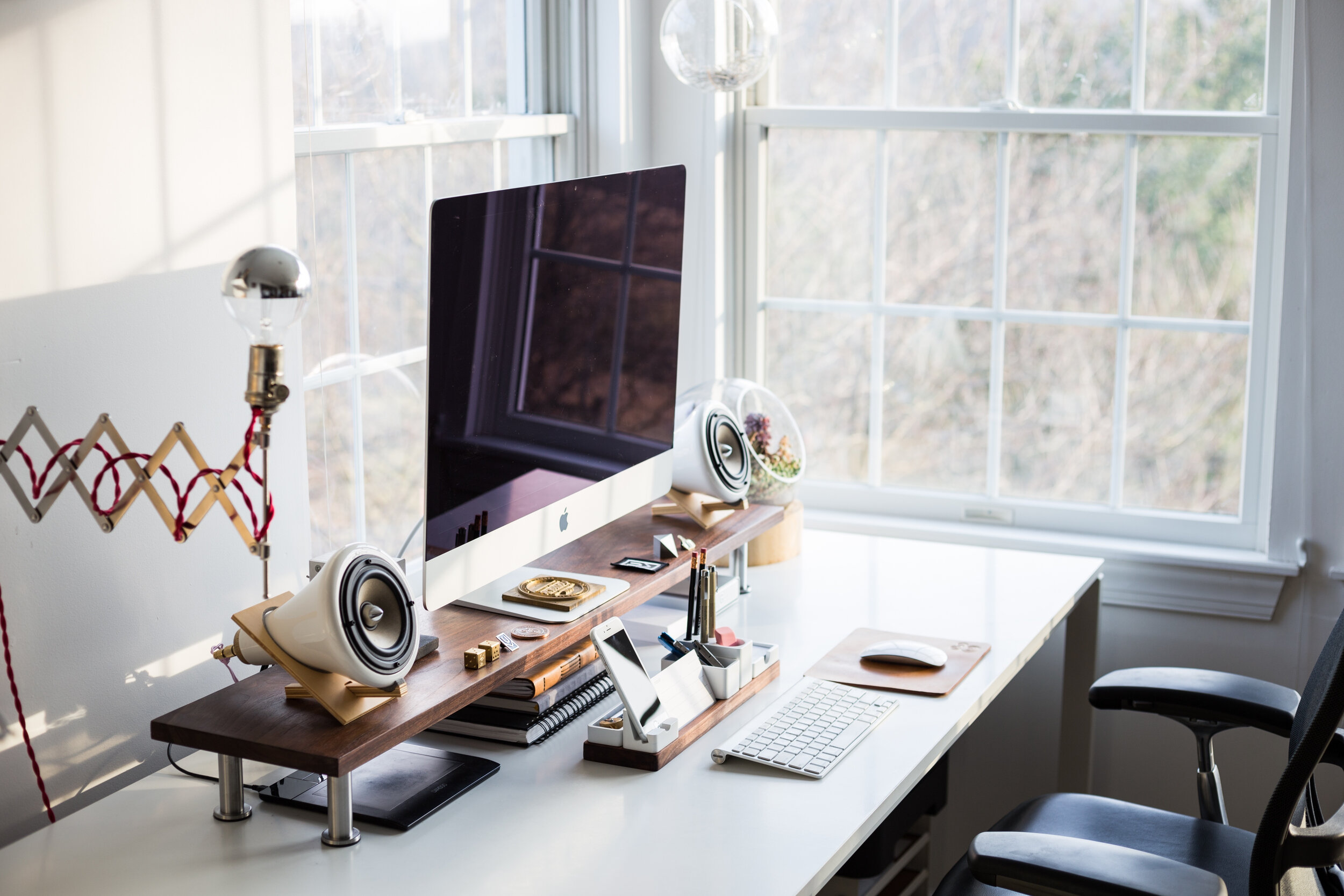All of a sudden, there are many of us finding ourselves working from home without much time to prepare a space or get to Officeworks in time to buy a monitor (did anybody see that shortage coming?!).
Every person is different- height, build, history of injuries, long term postural habits, time spent at the desk etc. One thing we do have in common is that an inefficient ergonomic set up is likely to lead to discomfort or pain.
Low back pain
Neck pain
Stiffness through the spine and rib cage
Tightness in muscles at the front of the hips, hamstrings, neck, chest and shoulders
Discomfort trying to sleep
HEADACHES
But as always, prevention is the best treatment!
Below is a checklist to help ensure your ergonomic set up and routine at home is one that will prevent discomfort and allow you to work as efficiently (if not more!) as you would at the office.
Image Credit: https://desky.com.au/
TABLE/DESK
Ideally the table height will allow you to sit with your elbows comfortably at 90 degrees and your wrists flat on the table.
Make sure you can fit your knees under the table in order to sit close enough to your work station
Location: We don’t all have the luxury of options, but consider setting up at a table that will limit distraction, provide natural light and airflow.
Options:
Standing stations are a good option to change things up. Think the kitchen bench or an outdoor setting.
Kneeling (if the knees can handle it). If finding the right height for a standing break isn’t going to work, kneeling at your desk will still provide relief from the sitting position.
SCREENS
LAPTOPS: Elevating the screen needs to be a priority to avoid looking down for extended periods of time. If you can acquire a separate keyboard this will help you A LOT. Use shoe boxes, books, cereal boxes etc to elevate the laptop.
Height- the top of the screen should be slightly below eye level.
Distance- an arm’s length away is a good place to start.
Alignment-
Single screen: centred so that your body and head are aligned.
Two screens: ideally your dominant screen will be as square as possible with your keyboard and chair.
CHAIR
Hip to knee angle- Aim for 90 degrees between knees and hips and feet flat on the floor.DO NOT HAVE KNEES ABOVE HIPS.
Keeping this angle at 90 degrees or slightly higher takes slouching pressure off the lower back and decreases tension in the hip flexors.
Lower back support- important for maintaining upright posture and preventing slouching through the spine.
Your options and what to consider adjusting:
Adjustable desk chair: seat angle, back angle, height.
The humble kitchen chair- use cushions or towels to add height, provide back support, improve the angle of the hips.
KEYBOARD & MOUSE
KEYBOARD:
Position:
Flat on the desk.
Square with your monitor so that your hips, shoulders, and head are all aligned.
Distance:
Wrist and hands shoulder rest on the table. The elbows should not rest on the table as this will have you leaning too far forward.
MOUSE:
Position: Inline with the keyboard so that you are not reaching forward or out. The aim is to keep the elbow and shoulder as neutral as possible.
Type: “Ergonomic mice” are available. These are similar to a normal mouse, but offset to a 45 degree angle so that your palm is not fully flat to the table. They can decrease strain through the wrist, elbow and particularly the shoulder. Consider a change to one of these if you are prone to pain at the front of the shoulder.
BREAKS/MOVEMENT- OUR FAVOURITE PART
PRODUCTIVITY: Remember- 6 hours of productive desk time is better than 9 hours of uncomfortable, blurry eyed, scrolling through Facebook desk time.
Ideally, having a break every 30 minutes is recommended during work hours.
BENEFITS:
Allows your eyes to rest and readjust to objects further than a computer screen away
Stretching through muscles that will become tight in the sitting position- pecs, hip flexors, spine.
Encourages blood flow, which encourages oxygen transport to the brain (what a BONUS) and other tissues- prevents fatigue!
Looking at a beautiful view- the garden, the sky, your happy dog!
Finding a delicious snack!
Imagine the possibilities when you gain 3 extra hours of creative/rest/play time purely from being PRODUCTIVE!
IF IN DOUBT MOVE MOVE MOVE!
Author Dr. Madeleine Goodman, Osteopath
Summit Osteopathy

